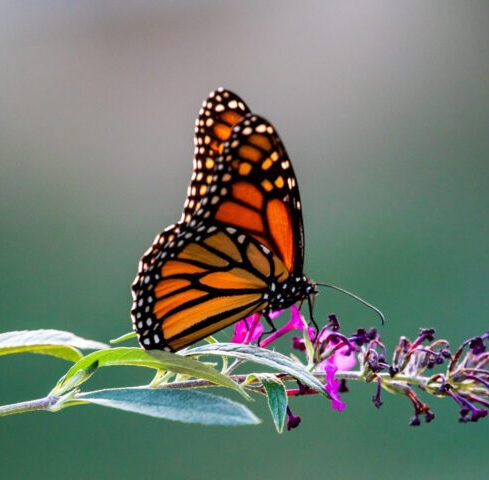You don’t have to go to exotic places to find interesting plants and animals to study at home or in the classroom! Illinois wildlife is as close as your local park or schoolyard. Explore the world of butterflies and moths with children.
Collect classroom resources.
- Ask a librarian to help you find children’s nonfiction books and nature magazines with colorful illustrations.
- Display posters of butterflies in the classroom. Provide laminated pictures of butterflies and moths in the science center.
Talk about butterflies and moths.
- Invite the children to say what they already know about butterflies and moths. Make a list or a topic web of their ideas and questions.
- Use a book illustration or a butterfly poster to point out the body parts. Use the terms head, thorax, and abdomen.
- Ask the children, “What are some ways that butterflies are different from moths?” Point out that most butterflies have knobs on the end of their antennae and moths do not.
- Ask, “What do butterflies or moths eat or drink?” Help children find answers in your books or on your poster.
Observe live insects.
- Observe butterflies, moths, and caterpillars in their natural habitat, if possible.
- Encourage the children to draw a butterfly or moth they’ve observed. Try to provide several opportunities for drawing and sketching. Each time, help children notice a specific characteristic of the moth or butterfly.
- Ask the children to comment on their observations. How can they tell if the insect is a butterfly or a moth?
Discuss the life cycle of butterflies.
- Use the illustrations of the butterfly’s life cycle from a picture book or butterfly poster. Many kits are also available for observing the butterfly life cycle.
- Introduce the term chrysalis. If possible, include a chrysalis of a butterfly native to Illinois in your science area where it can be observed but not touched. Be sure to collect a chrysalis only where it’s legal to do so. (Check regulations related to public property first.) Ask private property owners for permission.
- Release the adult butterfly outside near the area where the chrysalis was found as soon as it emerges. (A butterfly may need to feed on nectar and can damage its wings in captivity.)
Provide art materials.
- Invite the children to use paint, craft sticks, clothespins, paper, clay, or paper tubes to create a picture or model of a butterfly they’ve observed.
- Suggest using modeling clay to mold an egg, and then form it into a caterpillar. A small bag or a covered paper tube can be the chrysalis for the caterpillar.
IEL Resource
- Resource List: Appreciating the Natural World with Young Children


 PDF
PDF